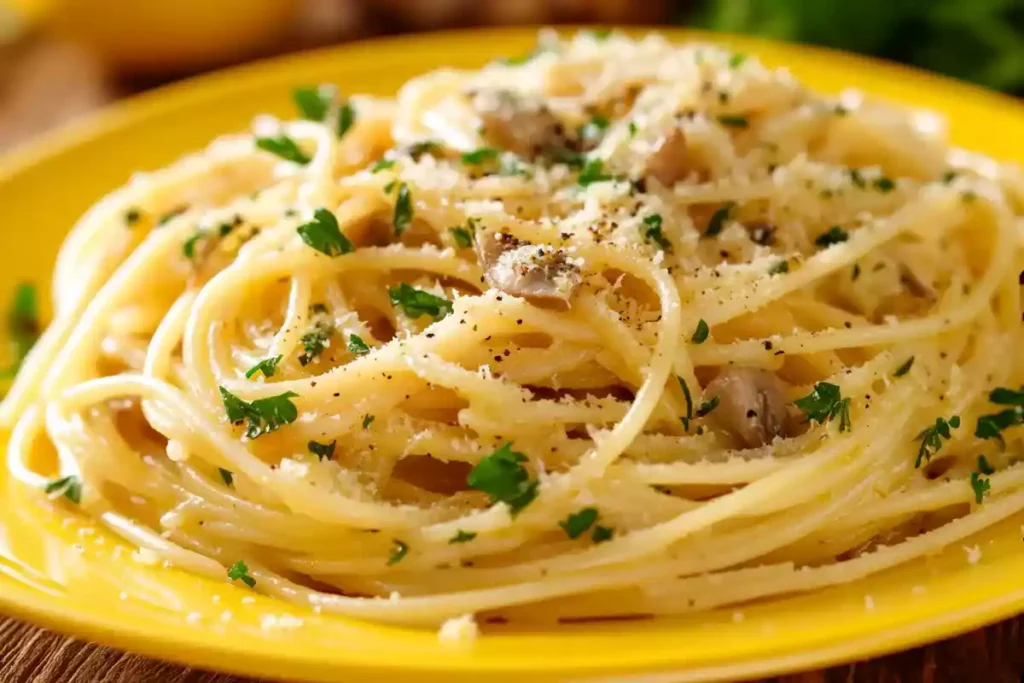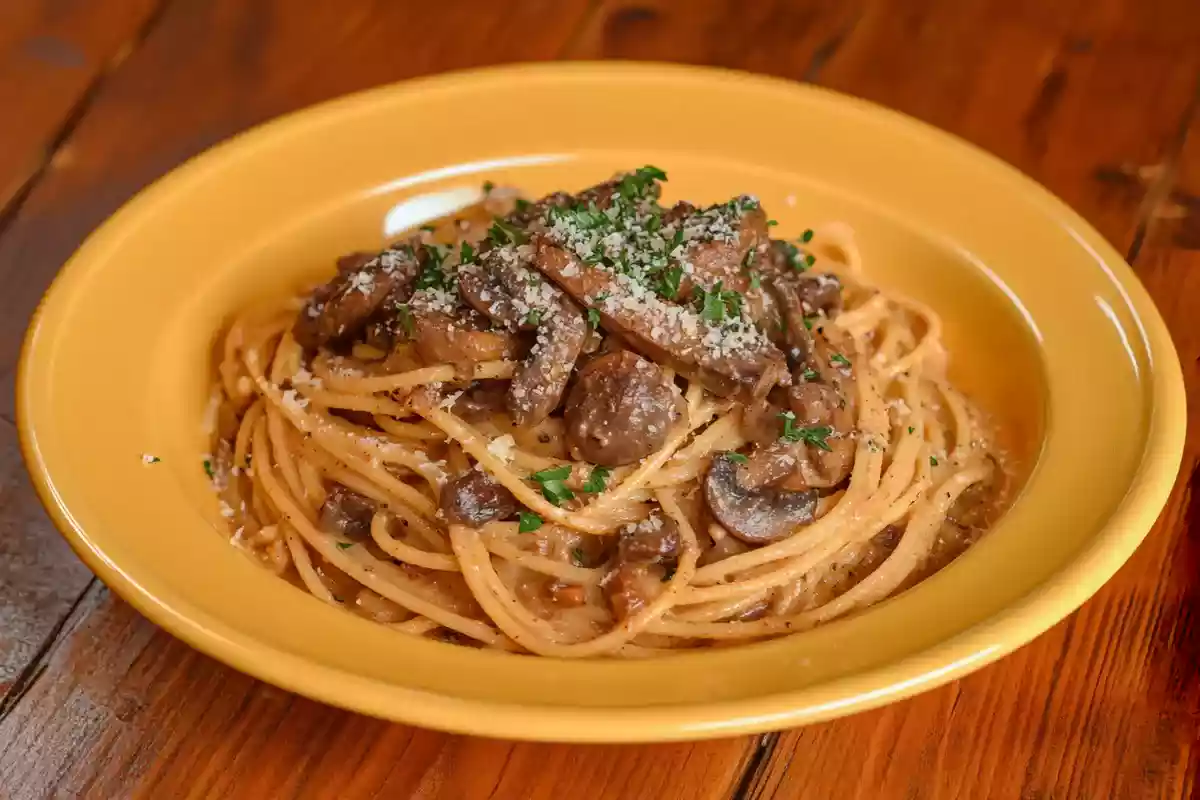Looking for a healthy twist to your regular pasta night? Enter brown rice pasta—a gluten-free, wholesome, and versatile alternative that caters to a variety of dietary preferences. Whether you’re a fitness enthusiast, a pasta lover seeking healthier options, or simply curious about broadening your culinary horizons, this article has got you covered. We’ll explore how to cook it to perfection, present mouthwatering recipes, and compare it to other popular alternatives. Let’s dive into the delicious world of brown rice pasta recipe.
Table of contents
- Introduction to Brown Rice Pasta
- How to Cook Brown Rice Pasta Perfectly
- Easy Brown Rice Pasta Recipes
- Comparing Brown Rice Pasta with Other Alternatives
- Health and Dietary Benefits
- FAQs
- Tips for Storing and Reheating Brown Rice Pasta
- Creative Ideas for Using Leftover Brown Rice Pasta
- Conclusion and Final Tips
Introduction to Brown Rice Pasta
What is Brown Rice Pasta?
Brown rice pasta is made primarily from finely ground brown rice. Unlike traditional pasta made with wheat flour, this pasta is a fantastic option for those following a gluten-free diet. It has a chewy texture and a mild, nutty flavor that pairs well with a wide variety of sauces and seasonings.
Brown rice pasta is available in numerous shapes and sizes, from spaghetti to penne, making it as versatile as regular pasta. Whether you’re preparing a creamy Alfredo or a tangy marinara, this pasta adapts beautifully to any recipe.
Why Choose Brown Rice Pasta Over Traditional Pasta?
The choice to swap traditional pasta with brown rice pasta comes with numerous benefits:
- Gluten-Free: Perfect for individuals with gluten intolerance or celiac disease.
- Nutrient-Dense: Packed with fiber, magnesium, and antioxidants.
- Low Glycemic Index: Provides steady energy without sharp blood sugar spikes.
Unlike refined pasta, brown rice pasta retains the outer bran and germ layers of the rice, preserving vital nutrients. This makes it a smarter choice for those prioritizing health without compromising on taste.
Nutritional Benefits of Brown Rice Pasta
This pasta is a powerhouse of nutrition. Here’s what makes it a must-have in your pantry:
- Rich in Fiber: Supports digestion and helps you feel full longer.
- Loaded with Antioxidants: Brown rice contains compounds like phenolics and flavonoids, which protect against cellular damage.
- High in Essential Minerals: Includes magnesium, which aids in muscle function and heart health.
Switching to brown rice pasta recipes can also support weight management, as its fiber content helps regulate appetite. Plus, it’s suitable for vegans, vegetarians, and anyone looking for plant-based meal options.
How to Cook Brown Rice Pasta Perfectly
Preparing Brown Rice Pasta: What You Need to Know
Cooking brown rice pasta isn’t rocket science, but a little prep work goes a long way. Start by checking the packaging for cooking instructions—they often vary by brand. Always use a large pot with ample water to avoid clumping, and add a pinch of salt for flavor. To prevent sticking, stir occasionally during cooking.
Step-by-Step Cooking Guide
- Boil Water: Fill a pot with 4-6 quarts of water and bring it to a rapid boil.
- Add Pasta: Toss in the brown rice pasta, stirring gently to avoid sticking.
- Cook to Perfection: Simmer for 8-12 minutes or until al dente. Test a piece for texture before draining.
- Drain and Rinse: Use a colander to drain, then rinse briefly with warm water to remove excess starch.
Common Mistakes and How to Avoid Them
- Overcooking: Leads to mushy pasta. Always follow the suggested cook time.
- Insufficient Water: Causes sticking. Use a large pot with enough water.
- Skipping the Rinse: Can leave your pasta gummy.
Tips for Achieving Perfect Texture and Taste
- Add a teaspoon of olive oil to the boiling water for a smoother finish.
- Use high-quality brown rice pasta for better flavor and consistency.
- Serve immediately for the best taste, as gluten-free pasta can harden when cooled.
For inspiration, check out related ideas like Mediterranean Chicken Pasta, a dish that pairs wonderfully with brown rice pasta.
Easy Brown Rice Pasta Recipes
Classic Tomato Sauce with recipe
This timeless combination is a hit for a reason! Toss al dente brown rice pasta with a rich tomato sauce, fresh basil, and a sprinkle of Parmesan for a simple yet satisfying meal.
Garlic and Olive Oil brown rice pasta recipe
For a quick and light dish, sauté minced garlic in olive oil, toss with cooked pasta, and finish with red pepper flakes and parsley.

One-Pot Brown Rice Pasta with Broccoli and Kale
Combine health and convenience with this one-pot recipe. Cook the pasta with broccoli and kale, then toss with a lemon-garlic sauce for a nutrient-packed meal.
Asian-Inspired Ginger Veggie brown rice pasta recipe
Switch it up with an Asian twist. Sauté julienned veggies like carrots and bell peppers, add grated ginger and soy sauce, then mix with the pasta for a vibrant dish.
Kid-Friendly Brown Rice Pasta Ideas
Make it fun with mini meatballs or add a cheesy Alfredo sauce. For picky eaters, colorful veggies can make all the difference.
If you’re craving variety, try experimenting with other recipes like this delightful Garlic Parmesan Chicken Pasta.
Comparing Brown Rice Pasta with Other Alternatives
Brown Rice Pasta vs. Chickpea Pasta: Which is Better?
Both brown rice pasta and chickpea pasta are excellent choices for those looking for gluten-free options, but each has its unique appeal.
- Texture and Taste: brown rice pasta recipe has a mild, nutty flavor and a chewy texture, while chickpea pasta tends to be firmer with an earthy taste.
- Nutritional Profile: Chickpea pasta is higher in protein, making it a great choice for those on high-protein diets. Meanwhile, brown rice pasta shines with its high fiber content and lower calorie count.
- Cooking Experience: Brown rice pasta is less likely to fall apart during cooking, whereas chickpea pasta can sometimes get mushy if overcooked.
For a hearty recipe to try with your favorite pasta, explore our Creamy Chicken and Rice Recipe for a delicious pairing idea.
Does Brown Rice Pasta Taste the Same as Regular Pasta?
If you’re used to traditional wheat-based pasta, brown rice pasta recipe may taste slightly different at first. The nutty undertone adds depth, while its slightly chewy texture makes it satisfying. With the right sauce and seasonings, the difference becomes almost indistinguishable.
Health and Dietary Benefits
Gluten-Free Advantages
One of the standout benefits of brown rice pasta is its gluten-free composition, making it safe for individuals with celiac disease or gluten intolerance. Unlike wheat pasta, it won’t trigger adverse reactions, ensuring a safer choice for your meals.
Brown Rice Pasta in Weight Management and Digestive Health
Thanks to its high fiber content, brown rice pasta recipes are excellent for weight management. Fiber not only helps you feel fuller longer but also promotes healthy digestion. Additionally, its low glycemic index ensures a gradual release of energy, preventing blood sugar spikes and crashes.
For more pasta-based ideas, explore the Burrata Pasta Guide for tips on creating creamy, decadent dishes.
FAQs
What is the Best Way to Cook recipe?
The best way to cook recipe is to follow the package instructions carefully. Typically, you’ll want to boil the pasta in plenty of salted water, stirring occasionally to prevent clumping. Rinsing the cooked pasta with warm water can help remove excess starch, leaving it less sticky and ready to absorb your favorite sauce.
Which is Better: Brown Rice Pasta or Chickpea Pasta?
This depends on your dietary needs and taste preferences. Chickpea pasta is rich in protein, while brown rice pasta excels in fiber content and has a milder flavor. If you’re looking for something closer to traditional pasta in taste and texture, brown rice pasta recipes might be your best bet.
Does brown rice pasta recipe Taste Good?
Yes, brown rice pasta tastes great! Its nutty undertones and slightly chewy texture make it a delicious base for any recipe. Pair it with bold sauces like marinara, pesto, or Alfredo for a meal that’s both healthy and satisfying.
Is Brown Rice Pasta Suitable for a Keto Diet?
Unfortunately, brown rice pasta isn’t keto-friendly as it contains a higher amount of carbohydrates. If you’re on a low-carb diet, you might consider alternatives like zucchini noodles or shirataki noodles.
Tips for Storing and Reheating Brown Rice Pasta
How to Store Cooked Brown Rice Pasta
Storing your cooked brown rice pasta correctly ensures it stays fresh and delicious for future meals. Once the pasta has cooled, transfer it into an airtight container. Add a small drizzle of olive oil and toss gently to prevent clumping. Store it in the refrigerator for up to 3-4 days.
If you’ve prepared a brown rice pasta recipe with sauce, store the pasta and sauce separately whenever possible. This prevents the pasta from absorbing too much liquid, which can affect its texture.
Best Methods for Reheating brown rice pasta recipe
Reheating brown rice pasta without compromising its taste or texture can be tricky, but these methods make it easy:
- Stovetop Method: Heat a non-stick skillet with a splash of water or broth. Add the pasta and toss gently over medium heat until warmed through.
- Microwave Method: Place the pasta in a microwave-safe dish, sprinkle some water over it, and cover loosely. Heat in 30-second intervals, stirring in between, to ensure even heating.
- Oven Method: If reheating pasta with sauce, place it in an oven-safe dish, cover with foil, and bake at 350°F for about 10-15 minutes.
Avoid over-reheating, as it can make the pasta overly soft or gummy.
Creative Ideas for Using Leftover Brown Rice Pasta
Transforming Leftovers into New Dishes
Leftovers don’t have to be boring! Here are some fun ways to reinvent your leftover brown rice pasta:
- Pasta Frittata: Combine the pasta with whisked eggs, grated cheese, and your favorite seasonings. Pour into a skillet and cook until set for a quick and hearty breakfast.
- Pasta Salad: Mix cold brown rice pasta with chopped veggies, a tangy vinaigrette, and fresh herbs for a refreshing lunch.
- Stir-Fry: Toss leftover pasta into a hot skillet with sautéed veggies, soy sauce, and sesame oil for an Asian-inspired dish.
Make It a Crowd-Pleaser
If you’ve got a gathering coming up, turn your leftovers into crowd-friendly meals:
- Casserole: Layer the pasta with marinara sauce, ricotta cheese, and shredded mozzarella in a baking dish. Bake until bubbly and golden.
- Soup Add-In: Stir the pasta into broths or soups for an added layer of texture and flavor.
For more meal ideas and inspiration, explore the wide variety of recipes on Menus Recipes.
Conclusion and Final Tips
Final Thoughts on Using Brown Rice Pasta
Switching to brown rice pasta recipes is an excellent way to enjoy your favorite meals with a healthier twist. It’s a gluten-free, nutrient-rich alternative that doesn’t compromise on taste or texture. Whether you’re making a quick weeknight dinner or experimenting with new recipes, this pasta is versatile and satisfying.
Inspiration for Experimenting with Brown Rice Pasta Recipes
Don’t hesitate to get creative in the kitchen! Add your personal touch with herbs, spices, or seasonal veggies. From creamy Alfredo to zesty tomato-based sauces, brown rice pasta pairs beautifully with countless ingredients.
For more inspiration, check out other recipe ideas on Menus Recipes, where you’ll find exciting dishes to elevate your meals.

